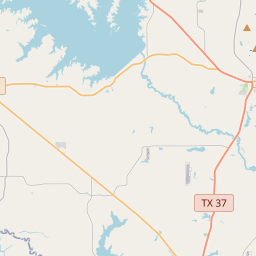Flora Lodge No. 119, A.F. & A.M.
Historical marker location:






Founded before the Civil War, as Quitman Masonic Lodge. Petition for charter was made on Jan. 5, 1852. First officers: James N. Brown, Worshipful Master; A. Gunter, Senior Warden; Francis C. McKnight, Junior Warden. Petitioners (other than the officers) included George Birdwell, W. L. Brown, S. M. Flournoy, I. D. Goes, E. H. McRee, I. H. McRee, M. W. Matthews, and Joshua Smith.
Without any recorded explanation, the lodge was given its present name on Christmas Day of 1852.
Original furniture was made by illustrious Wood County pioneer Peter Gunstream at cost of $10.75.
In 1854 fire destroyed lodge charter, jewels, and furniture. Combination Presbyterian church and lodge hall was built on this site and occupied in 1855. Members voted to prohibit smoking on the premises.
Ending of Civil War found the lodge penniless and hard pressed to pay 30 cents a pound for candles bought in 50 pound lots. In 1917 electric lighting closed a 65-year time span of candles and kerosene lamps.
The early lodge worked diligently, often meeting on Saturday mornings, dismissing to attend preaching services downstairs, and afterward resuming work.
Flora Lodge built new two-story structure at this historic location in 1949. (1972)
As one of the most visible programs of the Texas Historical Commission (THC), historical markers commemorate diverse topics in Texas history, including: the history and architecture of houses, commercial and public buildings, religious congregations, and military sites; events that changed the course of local and state history; and individuals who have made lasting contributions to the state, community organizations, and businesses.
Texas is known for its barbecue, and one of the most famous barbecue restaurants in the state is Kreuz Market in Lockhart. The restaurant has been in operation since 1900 and is still family-owned.
In the early 1800s, the region attracted settlers from the United States who were drawn to the lush forests and abundant resources. The first permanent European-American settlement was established in 1846, and it was named Quitman after John A. Quitman, a prominent politician of that time.
During the Civil War, Wood County played a significant role in supporting the Confederacy. Many residents enlisted in the Confederate Army, and the area became a center for military recruitment and training. After the war, the county suffered economically, but with the introduction of the railroad in the late 19th century, the economy began to recover.
Wood County's economy primarily relied on agriculture, with the growth of cotton, corn, and timber industries. The establishment of sawmills and the development of the timber industry brought prosperity to the area. In the early 20th century, the discovery of oil and gas reserves further fueled the county's economic development.
Today, Wood County continues to be an important agricultural and industrial center in Texas. The county's history is evident in its charming small towns, historic sites, and natural beauty. The strong sense of community and appreciation for the region's heritage are still evident today, making Wood County a vibrant and inviting place to visit or live.
Wood County Timeline
This timeline provides a concise overview of the key events in the history of Wood County, Texas.
- 1850: Wood County is established by the Texas legislature.
- 1852: The first courthouse in Wood County is built in Quitman.
- 1860: The population of Wood County reaches 4,867.
- 1875: The railroad reaches Wood County, boosting economic growth.
- 1895: The county seat is moved from Quitman to Mineola.
- 1920: The population of Wood County peaks at 19,109.
- 1930: The Great Depression hits Wood County, causing economic hardship.
- 1958: Lake Holbrook is completed, providing a recreational area for residents.
- 1970: Wood County's population decreases to 12,230.
- 1983: Holly Lake Ranch, a gated residential community, is established in Wood County.
- 2000: The population of Wood County surpasses 37,000.
- 2019: Wood County experiences steady growth and continues to be a thriving community.